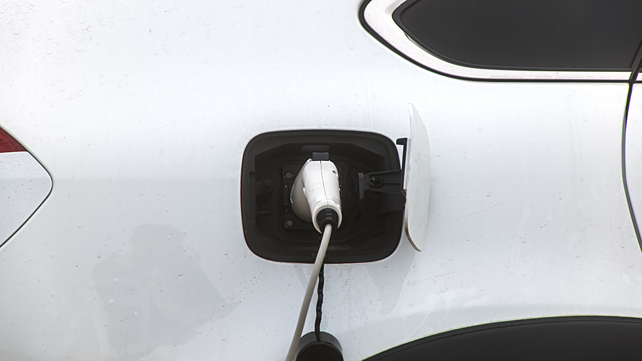
Deepak Jain is the Chairman & Managing Director of Lumax Industries Limited, the flagship company of the Lumax-DK Jain Group. Jain is currently the President of the Automotive Component Manufacturers Association of India (ACMA), Vice President of Toyota Kirloskar Supplier Association (TKSA), Executive Committee Member of Maruti Suzuki Supplier Welfare Association (MSSWA), Tata Motors Supplier Council and Member of CII National Council. He is also a member of the Delhi chapter of Young Presidents’ Organization (YPO) and Entrepreneurs’ Organisation (EO).
In ACMA’s half yearly results shared late last year, you had reported a negative growth of 34% as compared to the same period in the previous fiscal. You had also reported massive contraction of component sales to OEMs in the domestic market. How does the situation look now, and how do you look at the situation in the year coming up?
The auto industry in India has been going through a tough time, even in the pre-COVID era. This is obviously not going to be the last slowdown. However, it’s been extremely unique. We went through the first quarter in FY21 with zero sales, and started picking up in the second quarter. But there were a lot of vulnerabilities still in the system.
If you were to look at it FY19, which a lot of people say was the peak year of production, volumes and sales, we had already started witnessing some slowdown in the latter part of that financial year. The following year, FY20, we saw the whole industry de-grow somewhere around 17% and then we were hit by the COVID fiasco.
Of course, it has taken the industry immense resilience. There has been a lot of collaboration just to pass through these very tough and challenging times. All three of our customer segments – OEMs, aftermarket and exports – contracted, and that made it extremely difficult. We’ve also got to understand that 70% of our 800-plus members at ACMA are MSMEs. Such smaller players don’t have the financial bandwidth to withstand such volatility in the system.
The good part is, if you look at H2 FY21 – because we were nearing the festive season – India had started to unlock. There was probably pent-up demand, and you did see vehicles pick up. This eventually meant that the cash flow cycle started to churn in. Of course, there were certain interventions that the government had done on the supply side and given certain moratoriums on loans, which actually helped us survive.
There are multiple questions still on sustainability of these volumes. We are hopeful that we would get certain volume pickup. But if I were to just answer your question on how I see 2021, obviously there will be de-growth. The industry is still having a very tough time and it will take some time and a sustainable strategy with all stakeholders to cover the loss.
Some of the learning for the sector has clearly been in terms of the agility that the companies have incorporated, and the financial discipline that they have taken up. How deep rooted do you think is the impact of this virus outbreak on the sector and how well is the industry really prepared for something similar going forward?
I think not just the sector, but overall for humanity, this virus has taught us a very valuable lesson that human safety, human health comes at the forefront. We had this whole issue of migrant workers in the industry and manufacturing sectors. On the other side, we are interacting today on a digital platform. In a brick and mortar industry, when you’re talking about hardcore manufacturing, where again MSMEs dominate, COVID has helped us to fast track our initiative of digitalisation. That’s where agility comes in.
There have been a lot of pains as well in this whole journey, but I think the key word is collaboration. I want to actually take a minute to thank our OEMs, our customers, because they have been instrumental in not just hand holding, but also hearing and engaging with us. I have never seen such deep engagements with OEMs.
In the same way, the government engagement has been fantastic. The government stepped-in, deliberated and discussed not just with our industry, but across sectors. We can say with confidence that even with the resurgence coming in, our shopfloors will not shut down. I think that’s been the true story of resilience. Every company has actually taken this downturn to cut costs, cut corners and take out fat from the system. I’m a listed entity and we’ve seen in many listed entities, when they reported results, there has been improvements on their returns on equity and on profitability.
When we look at some of the supply side challenges, particularly the global semiconductor shortage, how has that really impacted the Indian industry?
This is a global issue and until it’s globally resolved, they will continue to impact the industry. For some players, the impact will be less, for some more. COVID has also taught us that the over dependency on one region needs to be mitigated. Ability as well as risk mitigation needs to be seen in a very different light.

I think the semiconductor shortage will continue, but we have to understand that India’s consumption of semiconductors is also very less. From the auto side perspective, I think we are just consuming 8% of the global semiconductor pie. Although it is less, we need to understand that if one part fails, it impacts the whole vehicle. There have been global statements by many OEMs and auto majors stating that they have been impacted negatively by this crisis. We will keep on calibrating it, we will keep on working.
What are some of the other key challenges that you see the industry facing in years to come?
I think India has a massive potential on mobility, the motorisation aspect, including four- and two-wheelers. The penetration levels are extremely low compared with any mature market. Now, the issue is, for about two years now, the affordability, the price sensitivity, the cost of a vehicle has dramatically and exponentially increased. The fuel tax has also exponentially risen. Hence, the affordability of a vehicle is a challenge today.
This is where the nation needs to understand that if we really want to grow into a manufacturing economy – today, the auto sector does contribute about 45% of the manufacturing GDP – we need to really redefine the lens of how we look into this auto sector.
There have been very clear regulations, and we all support these regulations, be it for safety standards or emissions. But we also need a very stable and long-term regulatory framework, where we can actually promote localisation, promote value add, and keep reducing our dependency on import and go with the PM’s clarion call for ‘Atmanirbharta’. There are multiple factors that have actually eroded volumes from the auto sector. We need to probably rethink what kind of structural support we need for the sector.
There are, of course, concerns with container shortages that impacted imports. The inflatory measures such as the rise of commodity prices and the shortages of certain base metals, including steel, have impacted the sector in terms of having a sustainable volume growth. There have been a lot of announcements by the government, but we are looking at a faster roll-out and clarity on certain announcements. These are certain things, where ambiguity comes into the system.
What sort of an impact do you see government interventions such as the PLI scheme and scrappage policy having on the industry returning to a growth trajectory?
All these measures indicate a very strong intent by the Government of India to actually promote the manufacturing sector. And we're very thankful for that. The auto industry is one of the highly taxed industries, and we see that both on the product and on fuel. However, we also understand the challenges of the government and the rationalisation of taxes probably needs to be done maybe at a future date.
We are actually waiting for the details. If you look at the PLI scheme, there were a lot of deliberations with the government and the industry to ensure that this scheme is structured in a way, where we can have certain export champions created, which can also encourage sourcing and Make an India.
But the key question is, when will the industry be ready for making good investments for the future? For that, a very clear cut regulatory framework and schemes need to be defined, which are long-term stable schemes. That will give the industry confidence to actually start investing for the future – be it on localisation, products that could be export worthy, or even for certain infrastructure-related issues, like for example the scrappage policy.
What would the industry need to be self-reliant in all aspects, say core research or design and innovation?
We have to understand that self-reliance doesn't mean looking inward or closing yourselves in a shell. I actually had the privilege of hearing Dr Pawan Goenka on ACMA’s annual session in September last year. And he put it beautifully – he said we need to actually become atmanirbhar in the sense that we need to actually improve our competitiveness, so that we can enhance India's brand in this global value chain.
At least for our sector, if we really need to be self-reliant, we have to work as an ecosystem. We need to not only look at our exports, but at localisations, where we can be more competitive. There is not a problem in importing, but we have to import the right types of products so that we are able to enhance our global footprint.
One very key thing on this whole competitiveness and atmanirbharta is this whole ecosystem of R&D and engineering. No nation in the auto world has actually become a leader until it has a very strong, fundamental, innovative culture to promote R&D. We need to put in a lot more effort of collaborating within the industry, and having public private partnerships with the academia.
ACMA, for example, has actually started its first initiative as the ACMA Centre of Excellence with a partnership with IIT and we’re using their centre in Sonepat. However, as future trends of mobility will change, we will need to skill up our people and have very different types of partnerships, unlike what we’ve had in the past. A multipronged strategy needs to be taken so that we are able to fast track these opportunities.
Talking about future mobility, what to your mind are some of the strongest growth drivers for the industry?
Fundamentally, the government’s intent is very clear to go electric. And given India’s demographics, India’s population and the intent to leapfrog in certain technologies, I think it’s the right intent. But we have to see that India is an extremely unique market. We are the world’s largest two-wheeler producer, the leader in motorcycles. We also have passenger cars and a very strong commercial vehicle as well as farm equipment sector. So, it’s a mix of mobility and we also have unique dimensions for catering to all these segments and manufacturing all types of products in auto components – be it suspensions, brakes or electrical.

From our perspective, when you look at future mobility, India needs to find its own solution. That’s where this whole start-up culture and the multiple ways of collecting and collating data are happening. ACMA is also trying to become more inclusive. We’ve been traditionally component manufacturers, but now with this whole future of mobility coming in, I think we need to also see and learn from different players, not necessarily in segments, but in the area of mobility that how it will also impact the components transformation. Growth will come through various opportunities.
There is obviously a market that will continue to grow given the scale of India and given the penetration in India. But I think fast-tracking will only come in when we’re looking at multiple opportunities and this whole transformation journey is giving out a lot of opportunities. We just need to be financially stable, and we need to be stable in terms of policies so that every entrepreneur in the component industry has the confidence to invest for the future.
While we prepare for this transition from a technology standpoint, preparing the manpower associated with the sector is equally important.
Absolutely, the success of this transition will depend on the efforts we make as a nation and as an industry to skill, re-skill and up-skill our manpower. And I think that’s one of the biggest opportunities as well as challenges. ACMA, of course, has been a founder member of ASDC, which has just completed a decade. I think the decade ASDC completed and the decade that is ahead of us is going to be extremely different. And I think we need to actually keep on skilling and need more agility to skilling. Here again, private-public partnerships will play an immense role.
What are some of your concerns in the new fiscal, or what are some of the opportunities you see for the sector?
The biggest concern remains sustainability. There is a lot of variability and volatility still in the system. But I hope we as an industry continue to learn to cope up with these mechanisms. Definitely there are more opportunities than challenges, because there is this whole transformation that is happening – transformation internally because of COVID, digitalisation and new innovative ways of how we basically manage our businesses.
Then there is obviously this whole transformation of mobility that will give you new technologies. There’s a very strong intent by the government to actually localise, which will give us a lot of opportunities. We need to further collaborate and engage a lot more closely with our customers. We need to keep focusing on competitiveness, be it on quality, on cost or on engineering. If we do that, we would be in a much, much better place than we were yesterday.
Watch the full video here: